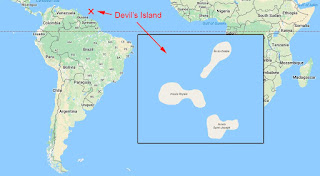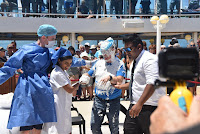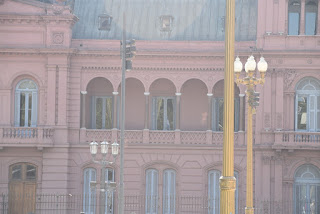The three main islands, Royale, Saint-Joseph and Diable, were the site of the infamous "Devil's Island" penal colony from 1852 to 1953. An estimated 80,000 prisoners were sent to the islands and 75% of them died. Under the laws of the day, if the sentence was 4-8 years, the prisoner had to return to French Guiana for the same length of time at the end of the sentence before being eligible to return to France. If the sentence was greater than 8 years, the prisoner was sentenced to stay on the mainland in French Guiana for life. These laws were an attempt by France to build up the population of French Guiana as establishing the colony had been unsuccessful.
The largest of the islands is Ile Royale and was the reception centre for prisoners. Devil's Island mainly housed political prisoners, including Alfred Dreyfus who was unjustly accused of treason. His story was told in the Roman Polanski film "The Dreyfus Affair". Henri Charriere's book "Papillon", later made into a movie with Dustin Hoffman and Steve McQueen, described the harsh conditions experienced by the prisoners. The book is controversial as there are no records of Charriere being imprisoned on Devil's Island and escape by sea was almost impossible through the shark infested waters around the islands. It is believed that he served time in one of the prisons on land in Fench Guiana.


Today, Ile Royale houses a lighthouse, a church, a small hotel, and a pier where visiting boats can dock. St. Joseph, known for the most brutal conditions, has a few chalets and yachts anchored in the harbour.
Remnants of the prison buildings can be seen. There is a cemetery marking the graves of guards, their children and other family members. The prisoners' bodies were thrown into the sea to feed the sharks. Diable (Devil's Island) is privately owned and cannot be visited.
We cruised around the islands on a Sunday. We could see groups of people on catamarans who appeared to be on a day trip from the mainland. Many people were swimming, a sign (we hope) that the sharks are long gone!



















































